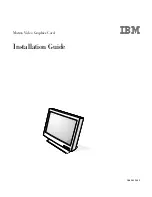
User's Guide HDSPe RayDAT
© RME
73
30. Technical Background
30.1 Lock and SyncCheck
Digital signals consist of a carrier and the data. If a digital signal is applied to an input, the re-
ceiver has to synchronize to the carrier clock in order to read the data correctly. To achieve this,
the receiver uses a PLL (Phase Locked Loop). As soon as the receiver meets the exact fre-
quency of the incoming signal, it is locked. This
Lock
state remains even with small changes of
the frequency, because the PLL tracks the receiver's frequency.
If an ADAT or SPDIF signal is applied to the HDSPe RayDAT, the unit indicates LOCK, i. e. a
valid input signal. This information is presented in the HDSPe RayDAT's Settings dialog. In the
status display
SyncCheck,
the state of all clocks is decoded and shown as simple text (No Lock,
Lock, Sync).
Unfortunately, LOCK does not necessarily mean that the received signal is correct with respect
to the clock which processes the read out of the embedded data. Example [1]: The HDSPe
RayDAT is set to 44.1 kHz internally (clock mode Master), and a mixing desk with ADAT output
is connected to input ADAT1. The status display will show LOCK immediately, but usually the
mixing desk's sample rate is generated internally (it is Master too), and thus slightly higher or
lower than the HDSPe RayDAT's internal sample rate. Result: When reading out the data, there
will frequently be read errors that cause clicks and drop outs.
Also when using multiple inputs, a simple LOCK is not sufficient. The above described problem
can be solved elegantly by setting the HDSPe RayDAT from Master to AutoSync (its internal
clock will then be the clock delivered by the mixing desk). But in case another un-synchronous
device is connected, there will again be a slight difference in the sample rate, and therefore
clicks and drop outs.
In order to display those problems, the HDSPe RayDAT includes
SyncCheck
®
. It checks all
clocks used for
synchronicity
. If they are not synchronous to each other, the status display will
show LOCK. If they are synchronous to each other (i. e. absolutely identical) the status display
will change to SYNC. In example 1 it would have been obvious that the entry LOCK is shown in
SyncCheck
right after connecting the mixing desk.
In practice, SyncCheck allows for a quick overview of the correct configuration of all digital de-
vices. So one of the most difficult and error-prone topics of the digital studio world finally be-
comes easy to handle.
Summary of Contents for Hammerfall HDSPe RayDAT
Page 5: ...User s Guide HDSPe RayDAT RME 5 User s Guide HDSPe RayDAT General...
Page 38: ...38 User s Guide HDSPe RayDAT RME...
Page 39: ...User s Guide HDSPe RayDAT RME 39 User s Guide HDSPe RayDAT Connections and TotalMix...
Page 46: ...46 User s Guide HDSPe RayDAT RME...
Page 68: ...68 User s Guide HDSPe RayDAT RME...
Page 69: ...User s Guide HDSPe RayDAT RME 69 User s Guide HDSPe RayDAT Technical Reference...






































